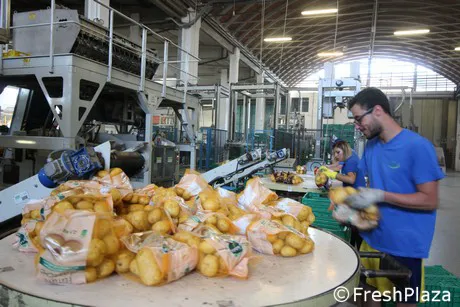"The campaign is over in Southern Italy and we started harvesting the early varieties ten days ago. Yields are up to 30% higher than last year, quality is very good and grades are rather big," explains director Claudio Brintazzoli.
However, while onion prices are quite low, "potato prices are satisfactory for both producers and packers."

Potato processing at CESAC.
Prices though have dropped slightly with respect to a few days ago. "Producer prices have dropped from 30 cents/kg to 25-26 cents/kg in just two weeks. This was due to the fact that those less structured companies with, for example, no cold-storage units have dumped their produce on the market. If supply was organised better, we could achieve a few cents more." Some Italian potatoes are sent to France and Holland, where stocks have ended earlier than usual this year.
In addition, in Emilia-Romagna, "there are production areas that are growing and expanding, especially since many went from producing corn for biodigesters to more profitable crops like potatoes in the past 10-15 years."
"Last but not least, potato producers have started owning more hectares - producers growing potatoes on 50 or even 100 hectares has become normal now." This of course leads to supply concentration, economies of scale and innovation.
